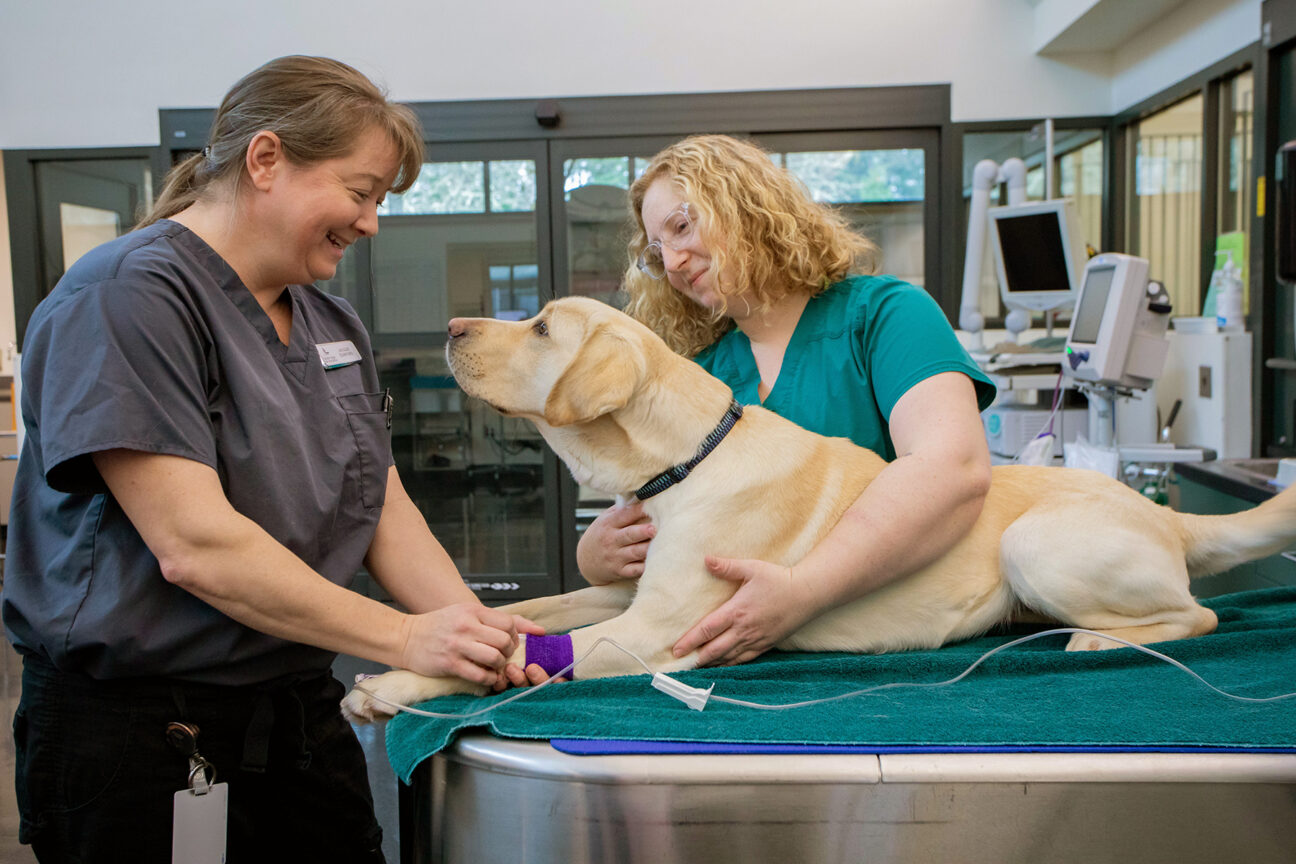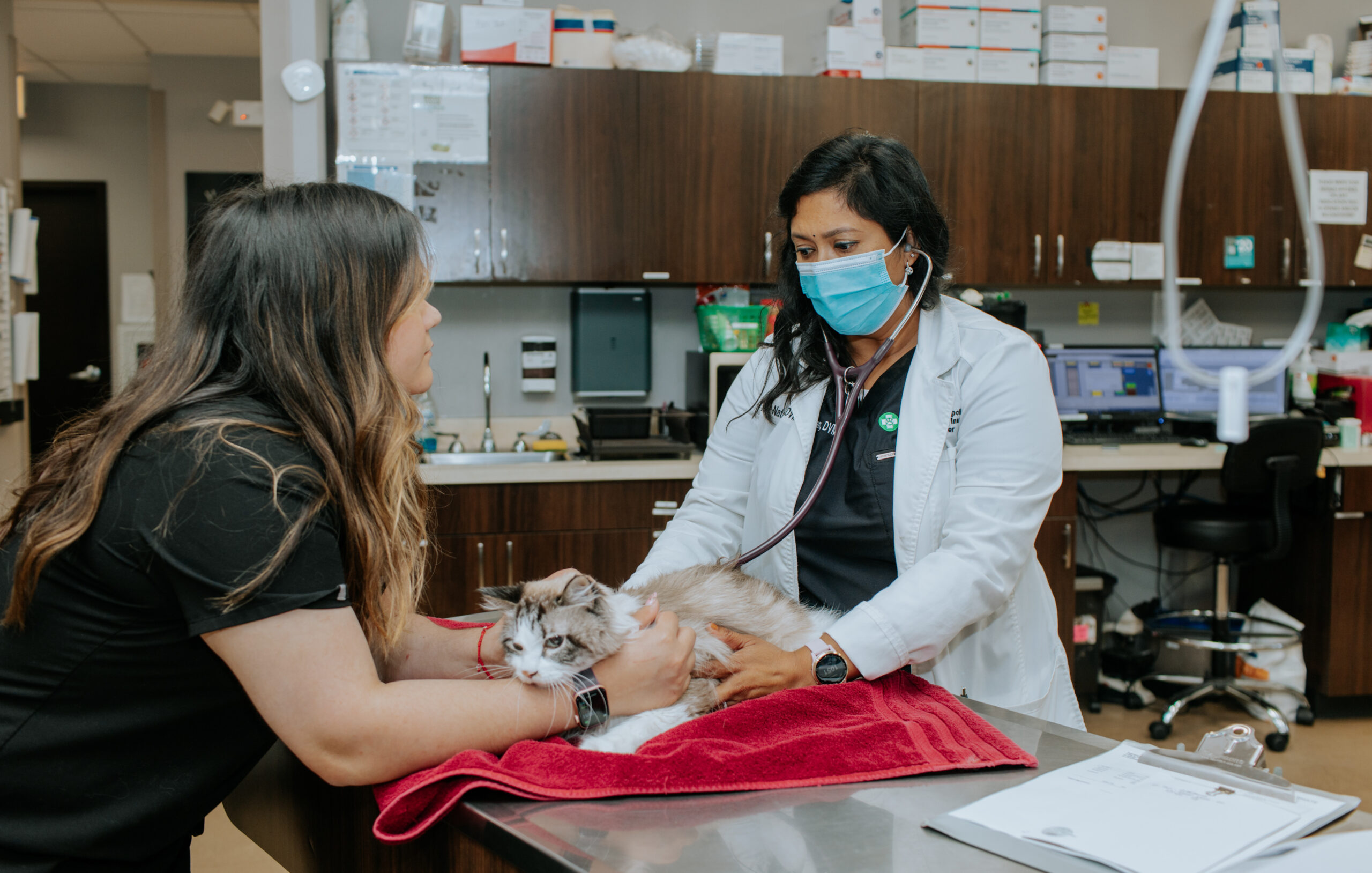Common Pet Injuries That Require an Immediate Visit to an emergency vet bellingham
Common Pet Injuries That Require an Immediate Visit to an emergency vet bellingham
Blog Article
Everything About Veterinarian Surgical Procedure: Comprehending the Value of Expert Take Care Of Your Pets
Veterinary surgical treatment is a crucial component of animal health care. It encompasses various procedures, from routine elective surgical treatments to urgent interventions. Recognizing the intricacies of these surgeries can aid pet proprietors make educated choices. The preparation, implementation, and healing stages are crucial for making sure the health of animals. With appropriate understanding, proprietors can navigate the intricacies of vet care. What elements should be taken into consideration before a family pet undergoes surgical procedure?
Kinds of Vet Surgeries
When a family pet needs surgical treatment, recognizing the numerous kinds of vet surgical procedures can assist pet owners make notified choices. Vet surgeries can be extensively classified into 3 major types: elective, immediate, and emergency situation surgical procedures. Elective surgical procedures, such as spaying or neutering, are planned treatments that are not instantly serious. Immediate surgical treatments, like those for foreign body removal, have to be done quickly yet are not deadly in the minute. Emergency surgeries, such as those resolving severe injury or internal blood loss, are vital and call for immediate attention.Additionally, surgical procedures can differ in intricacy, ranging from minimally invasive laparoscopic treatments to much more substantial open surgical treatments. Each kind of surgical procedure brings its very own threats and recuperation processes. Recognizing these groups enables pet dog proprietors to take part in purposeful discussions with veterinarians, causing better results for their precious family pets.
Getting ready for Your Pet dog's Surgical treatment
Planning for a family pet's surgical procedure entails a complete checklist to assure all essentials are covered. Efficient communication with the veterinarian is essential for understanding the treatment and any kind of necessary pre-operative actions - emergency vet near me. Furthermore, having clear post-operative care directions will aid owners supply the most effective assistance for their recuperating family pets
Pre-Surgery List Basics
Guaranteeing a smooth medical experience for a pet needs mindful prep work and interest to detail. A pre-surgery list is necessary for animal proprietors to adhere to. Initially, verifying the scheduled surgery day and time is essential. Proprietors ought to likewise verify that their pet has actually not eaten according to the vet's directions, normally for 8-12 hours before surgical treatment. Gathering required clinical documents, consisting of vaccination background, is essential for the veterinarian's evaluation. It is likewise recommended to prepare a comfortable space in the house for the animal's recuperation after surgical procedure. Finally, proprietors need to have a prepare for transport to and from the veterinary clinic, making certain that the pet dog is safe and secure and comfy throughout the trip. Following these steps can substantially improve the surgical experience.
Connecting With Your Vet

Efficient communication with the vet is crucial for a successful medical experience for pets. Owners must be prepared to discuss their animal's case history, consisting of any kind of pre-existing problems, medicines, and allergic reactions. This info assists the veterinarian analyze risks and tailor the medical strategy appropriately. Furthermore, pet dog proprietors ought to ask inquiries relating to the treatment, anesthesia, and expected end results to guarantee they totally comprehend the process. Clarifying any kind of uncertainties can alleviate anxiety for both the pet and the proprietor. It is additionally crucial to communicate any type of behavioral changes or problems observed in the pet dog leading up to the surgical procedure. Ultimately, clear dialogue fosters depend on and cooperation, making certain that family pets receive the most effective possible treatment during their surgical trip.
Post-Operative Treatment Instructions
After discussing the surgical procedure with the vet, pet dog owners should concentrate on post-operative care directions to assist in a smooth healing for their pets. These directions generally consist of checking the surgical website for signs of infection, such as inflammation or discharge. Pet dogs may need to be maintained calm and constrained to stop extreme motion that could disrupt healing. Discomfort management is important, so proprietors need to adhere to the vet's assistance on providing medications. In addition, nutritional constraints may be advised to avoid intestinal trouble. Normal follow-up appointments are necessary to assure appropriate healing and address any type of problems. By adhering to these post-operative treatment instructions, animal owners can greatly add to their family pet's healing and total well-being.
The Surgery Explained
The surgical process for pets includes vital actions that ensure their security and healing. Pre-surgery prep work are crucial for minimizing dangers, while post-operative care standards play a vital duty in promoting recovery. Understanding these parts aids family pet owners navigate the surgical experience more effectively.
Pre-Surgery Preparations
Prior to a pet goes through surgical treatment, a number of crucial preparations have to occur to assure a safe and effective procedure. A comprehensive vet exam is important to assess the family pet's general health and determine any potential risks. This might include blood tests, imaging, or other diagnostics. The veterinarian will likewise talk about anesthesia alternatives tailored to the family pet's certain needs. Furthermore, pet dog owners are typically advised to keep food and water for a specified time before surgical procedure to reduce the risk of complications throughout anesthesia. It's vital for owners to supply a full case history, consisting of any kind of drugs or allergic reactions, guaranteeing the surgical team has all necessary details. Proper interaction and adherence to pre-surgery guidelines can significantly improve the end result of the treatment.
Post-Operative Treatment Guidelines
Correct post-operative treatment is essential for making certain an animal's recovery adhering to surgical treatment. After the procedure, animals ought to be monitored carefully for any type of signs of issues, such as excessive blood loss, swelling, or uncommon habits. It is necessary to adhere to the veterinarian's directions regarding drugs, consisting of discomfort relievers and prescription antibiotics. Pets ought to be kept in a peaceful, comfortable environment to minimize stress and advertise recovery. Limiting task is essential; short, leashed walks may be needed, however jumping or running must be avoided. Routine follow-up consultations need to be set up to assess the healing process. Additionally, the medical website needs to be maintained clean and dry, with any type of signs of infection reported to a vet without delay. next page Following these standards improves healing end results.
Anesthetic and Pain Monitoring
Effective anesthesia and discomfort monitoring are crucial components of vet surgical procedure, making certain that animals continue to be comfy and risk-free throughout the procedure. Vets analyze each family pet's individual demands, thinking about factors such as age, weight, health and wellness condition, and the kind of surgical treatment being performed.Anesthesia protocols normally include a combination of pre-anesthetic medicines, induction agents, and inhalant anesthetics, permitting specific control over the pet's level of awareness. Tracking during surgical procedure is essential; vets constantly observe important indicators to address any kind of potential difficulties promptly.Pain administration strategies may entail opioids, non-steroidal anti-inflammatory medications (NSAIDs), and regional anesthetics, tailored to the pet's certain situation. This diverse technique assists minimize discomfort and advertises a smoother medical experience. By prioritizing effective anesthesia and discomfort administration, veterinary specialists improve the general well-being of animals going through procedures, ensuring they receive the greatest requirement of care.
Post-Operative Care and Recovery
Following surgery, the emphasis changes to post-operative care and recuperation, which is necessary for ensuring a pet dog's risk-free return to typical tasks. Throughout this period, pets call for a silent, comfy setting to aid recovery. Owners need to very closely check their pets for any type of indications of pain or uncommon behavior.Veterinary standards typically consist of particular instructions related to drug administration, injury treatment, and nutritional changes. It is essential to stick to these suggestions to decrease problems and advertise recovery. Pets might require to be restricted from energetic tasks, such as running or leaping, during their recovery period (canine tplo surgery).Regular follow-up consultations with the vet allow for surveillance of the pet's development and timely changes to the treatment plan. Providing emotional assistance and friendship can additionally enhance an animal's recuperation experience, helping to ease stress and anxiety and anxiousness. Overall, attentive post-operative treatment plays a significant role in accomplishing a successful recuperation
Acknowledging Issues After Surgery
Just how can animal owners identify issues after surgical treatment? Awareness of particular indications is crucial for making sure the health of family pets during healing. Typical signs consist of extreme swelling, redness, or discharge at the medical website, which might indicate infection. Furthermore, persistent pain, indicated by yawping or unwillingness to move, ought to prompt instant attention. Modifications in cravings or water consumption can also suggest problems; a reduction in these habits might indicate pain or distress.Moreover, pet dog proprietors must monitor their family pets for any type of unusual actions, such as sleepiness or problem breathing, as these can be indications of major problems. Throwing up or looseness of the bowels adhering to surgical procedure might read here require urgent veterinary analysis. Recognizing these difficulties early can significantly impact a pet dog's recovery procedure, stressing the value of vigilance and prompt interaction with a veterinarian for any worrying symptoms.
The Duty of Vet Professionals in Surgical Care
Vet specialists play a crucial function in making certain the safety and success of operations for animals, particularly following surgery when keeping an eye on and treatment are critical. These experts consist of veterinarians, veterinary specialists, and assistance personnel, every one of whom add specialized skills to the medical process.Before surgical treatment, vets carry out comprehensive evaluations to examine the pet dog's health and wellness, guaranteeing that any type of underlying problems are taken care redirected here of. During the treatment, the medical team supplies anesthetic, preserves sterilized environments, and keeps an eye on key indications, all vital for lessening risks.Post-operative care is equally significant; vet professionals observe for difficulties, take care of pain, and overview proprietors on healing methods. Their knowledge enables them to acknowledge very early indications of distress or infection, guaranteeing prompt intervention. Inevitably, the joint efforts of veterinary professionals in surgical care promote a risk-free atmosphere, promoting the health of family pets throughout the medical journey.

Regularly Asked Concerns
How Do I Pick the Right Veterinary Surgeon for My Family pet?
Picking the ideal vet surgeon involves researching qualifications, reading reviews, and evaluating the center's environment. It is vital to reflect on the surgeon's experience with particular procedures and their communication style when choosing.
What Prevail Misconceptions About Veterinarian Surgeries?
Typical misunderstandings about vet surgical procedures include ideas that they are always risky, unneeded, or just for emergency situations. Numerous animal owners undervalue the benefits of preventative procedures and the skill entailed in vet surgical treatment.
Just How Much Will My Family pet's Surgery Price?
The expense of a pet's surgery can differ substantially based on factors such as the kind of treatment, the vet's experience, and geographic area (24 hour vet near me). Generally, costs vary from a couple of hundred to several thousand bucks

Can My Pet Dog Consume Prior To Surgery?
Before surgery, it is generally recommended that animals avoid consuming for a details period. This fasting helps in reducing the threat of difficulties during anesthesia. Owners must consult their veterinarian for exact directions customized to their pet dog's needs.
What happens if My Family Pet Has Pre-Existing Wellness Conditions?
When a family pet has pre-existing health problems, it's essential for the vet to analyze these factors prior to surgical procedure. This assessment guarantees appropriate precautions are taken, decreasing risks and optimizing the pet dog's overall safety and security during the treatment.
Report this page